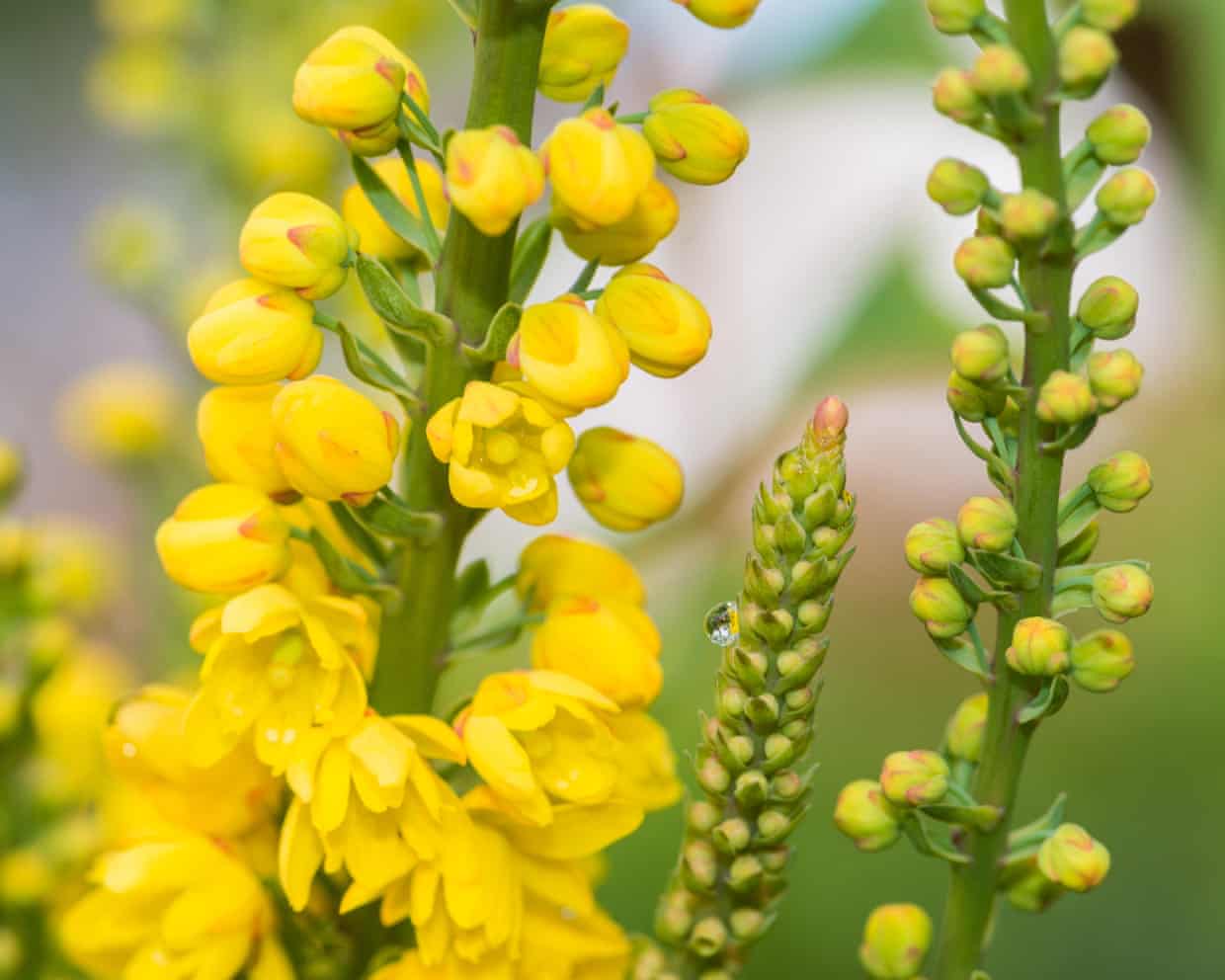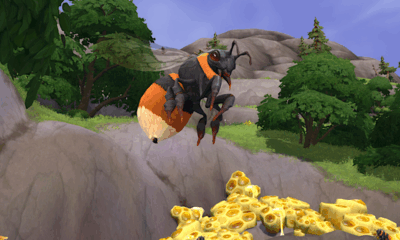Science
Surprising Stamen Movements Enhance Flower Pollination Strategies

Flowers exhibit complex behaviors to enhance their chances of successful pollination, particularly through their male reproductive parts, known as stamens. Numerous plant species utilize touch-sensitive stamen movements to optimize interactions with pollinators, ensuring their reproductive success while conserving valuable resources.
Research highlights that flowers such as those from the genus Berberis and Mahonia have evolved mechanisms to interact with visiting insects. When pollinators approach these flowers to extract nectar, they trigger a response from the stamens, which bend and release pollen directly onto the insect’s face or tongue. This unexpected encounter can deter the insect from lingering too long, thus preserving the flower’s nectar and pollen for future visitors. As a result, the insect carries this pollen to another flower, facilitating cross-pollination.
In a more dramatic display of adaptation, the Catasetum orchid employs a vigorous strategy to ensure effective pollination. When an insect lands on its flowers, it faces a forceful reaction. The orchid releases a pair of sticky pollen bags at high speed, often ejecting the pollinator from the flower while adhering the pollen to its body. This method not only increases the likelihood of successful pollen transfer but also minimizes the time spent on any single flower.
Another fascinating example is found in the triggerplants, specifically the species Stylidium, native to Australia. These flowers feature a unique club-shaped organ that swings rapidly when touched. This swift motion occurs within approximately ten thousandths of a second, allowing the flower to strike the visiting insect with pollen while simultaneously collecting any pollen the insect carries. After this rapid movement, the trigger resets, prepared for the next pollinator, thus maximizing its reproductive efficiency.
These remarkable mechanisms showcase the intricate relationships between flowers and their pollinators. By employing touch-sensitive movements, flowers not only enhance their chances of successful reproduction but also engage in a dynamic interaction with the ecosystem. Understanding these strategies can deepen our appreciation for the complexities of plant reproductive biology and the vital role of pollinators in maintaining biodiversity.
-

 Science1 week ago
Science1 week agoMicrosoft Confirms U.S. Law Overrules Canadian Data Sovereignty
-

 Technology1 week ago
Technology1 week agoGoogle Pixel 10 Pro Fold Specs Unveiled Ahead of Launch
-

 Technology1 week ago
Technology1 week agoWorld of Warcraft Players Buzz Over 19-Quest Bee Challenge
-

 Science5 days ago
Science5 days agoChina’s Wukong Spacesuit Sets New Standard for AI in Space
-

 Health6 days ago
Health6 days agoRideau LRT Station Closed Following Fatal Cardiac Incident
-

 Science1 week ago
Science1 week agoXi Labs Innovates with New AI Operating System Set for 2025 Launch
-

 Lifestyle6 days ago
Lifestyle6 days agoVancouver’s Mini Mini Market Showcases Young Creatives
-

 Science1 week ago
Science1 week agoInfrastructure Overhaul Drives AI Integration at JPMorgan Chase
-

 Technology1 week ago
Technology1 week agoHumanoid Robots Compete in Hilarious Debut Games in Beijing
-

 Top Stories1 week ago
Top Stories1 week agoSurrey Ends Horse Racing at Fraser Downs for Major Redevelopment
-

 Technology1 week ago
Technology1 week agoNew IDR01 Smart Ring Offers Advanced Sports Tracking for $169
-

 Technology5 days ago
Technology5 days agoDragon Ball: Sparking! Zero Launching on Switch and Switch 2 This November
-

 Business6 days ago
Business6 days agoCanadian Stock Index Rises Slightly Amid Mixed U.S. Markets
-

 Health6 days ago
Health6 days agoB.C. Review Urges Changes in Rare-Disease Drug Funding System
-

 Technology1 week ago
Technology1 week agoGlobal Launch of Ragnarok M: Classic Set for September 3, 2025
-

 Technology1 week ago
Technology1 week agoFuture Entertainment Launches DDoD with Gameplay Trailer Showcase
-

 Science1 week ago
Science1 week agoNew Precision Approach to Treating Depression Tailors Care to Patients
-

 Education5 days ago
Education5 days agoParents Demand a Voice in Winnipeg’s Curriculum Changes
-

 Technology1 week ago
Technology1 week agoInnovative 140W GaN Travel Adapter Combines Power and Convenience
-

 Business1 week ago
Business1 week agoNew Estimates Reveal ChatGPT-5 Energy Use Could Soar
-

 Health5 days ago
Health5 days agoRideau LRT Station Closed Following Fatal Cardiac Arrest Incident
-

 Business5 days ago
Business5 days agoAir Canada and Flight Attendants Resume Negotiations Amid Ongoing Strike
-

 Health1 week ago
Health1 week agoGiant Boba and Unique Treats Take Center Stage at Ottawa’s Newest Bubble Tea Shop
-

 Business1 week ago
Business1 week agoUkraine Strikes Lukoil Refinery, Halting Operations Amid Conflict










